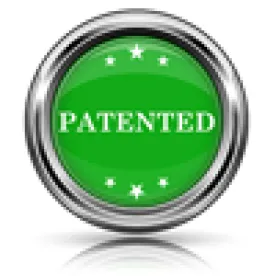In a decision denying rehearing of the order denying institution of an inter partes review (IPR), the Patent Trial and Appeal Board (PTAB or Board) explained the factors it considers in making institution decisions based on serial petitions. In doing so, the Board made it clear that a petitioner advancing the same or substantially the same prior art or arguments previously before the Office should expect the Board to exercise its discretion under § 325(d) to not institute. Conopco Inc. dba Unilever, v. The Procter & Gamble Company, Case IPR2014-00628, (PTAB Mar. 20, 2015) (Obermann, APJ.).
The petitioner, Unilever, requested rehearing of the Board’s decision denying institution of IPR review. Unilever asked for an expanded panel, including the Chief Administrative Patent Judge, to rehear the matter. Unilever made four arguments for rehearing: that the Board had misapplied § 325(d) and its provisions regarding denying institution based on the same or substantially the same prior art or arguments previously before the Office; that the prior art relied on by the second petition was not substantially the same as that relied on in its first petition; that the Board applied improper estoppel considerations, and that there is no statute, rule or policy basis justifying what is essentially a rule precluding a petitioner from filing a second, improved petition. In the rehearing decision, the Board rejected each of these arguments.
The Board explained that its authority for deciding whether to grant institution is grounded not only in § 325(d), but also in the broader discretion to deny a petition under § 314(a). The latter statue expressly states that “the Director may, but not must, institute a review” even where a petitioner meets the required threshold, i.e., likelihood that a claim will be found invalid.
Revisiting its earlier analysis, the Board noted that a petition raising the same or substantially the same prior art or argument as previously before the U.S. Patent and Trademark Office was just one factor in its denial of institution. Another was “the reasonable inference that new prior art references raised in the second petition . . . were known to Unilever when it filed the first petition.” The Board noted that “a grant of review, under the particular circumstances presented here, would incentivize petitioners to hold back prior art for successive attacks, should a first petition be denied.” The Board also noted that “the sheer multiplicity of grounds asserted in each petition favors denying the second petition, in part, to protect P&G from multifarious challenges to the same patent claims.”
Addressing Unilever’s estoppel argument, the Board explained that petitioner had not articulated a rational basis for precluding the Board from considering whether any new arguments or prior art were known or available at the time of filing of the first petition and that the petitioner’s bright-line approach of automatically allowing follow-on petitions to correct deficiencies in the initial petition would “allow petitioners to unveil strategically their best prior art and arguments in serial petitions, using our decisions on institution as a roadmap, until a ground is advanced that results in review.” The Board underscored that such a practice “would tax Board resources, and force patent owners to defend multiple attacks.”
Finally, the Board explained that panel expansion was not something that the panel itself had authority to grant.
Practice Note: This decision is a tutorial in how serial petitions should and should not be structured. The Board took umbrage at the “sheer multiplicity” of invalidity grounds advanced in the serial petition. To the extent possible, second petitions should be based on new prior art and arguments, and the prior art applied should be art that was not known by the petitioner at the time the first petition was filed. Petitioners are also well advised to be selective as to the number of grounds of unpatentability asserted against the challenged claims.




 />i
/>i

